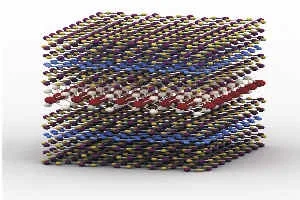Graphene and related 2D materials (such as boron nitride and molybdenum disulphide) can be used to create thin, flexible and semi-transparent LEDs for next-gen phones, tablets and TVs.
Researchers at the University of Manchester and University of Sheffield created LEDs that were engineered on an atomic level. They combined 20 different 2D crystals to create the LEDs, which emit light from across their entire surface. The devices are between 10 and 40 atoms thick, making them both flexible and transparent.
Stacked layers of 2D materials (heterostructures) were built to create tailored functionality and introduce quantum wells to control the movement of electrons. Preparing these on elastic and transparent substrates proved that the heterostructures can provide the basis for electronics with these properties.
It is thought that increasing the number of available 2D crystals and improving their electronic quality will open up new functionality for the structures.
Alexander Tartakovskii, a professor at the University of Sheffield, said, “The novel LED structures are robust and show no significant change in performance over many weeks of measurements… Despite the early days in the raw materials manufacture, the quantum efficiency [photons emitted per electron injected] is already comparable to organic LEDs”.

